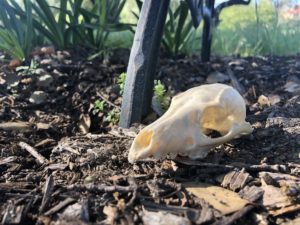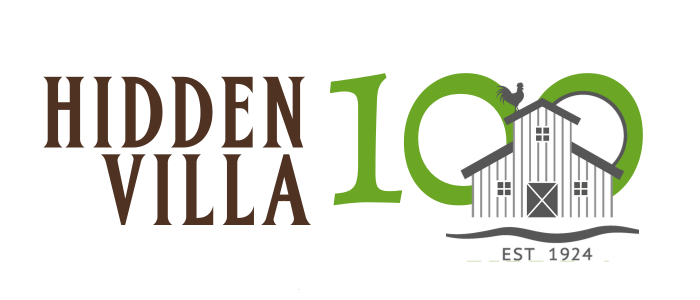
Summary:
In the skull video, Noah and Natalie demonstrated how to look for clues on a skull in order to learn about the life of the animal. Eye placement and tooth shapes are two excellent clues that can solve the mystery of how an animal survives! Noah and Natalie also talked about where you might be able to find animal evidence in your own backyard!
Know-It-All
- What are some examples of animal evidence? How does animal evidence help scientists?
2. Noah and Natalie showed you three skulls and focused on the shape of the teeth. If an animal only eats plants and has flat teeth, what type of animal is it? If an animal only eats meat and has sharp, pointy teeth, what do we call it? If an animal eats plants and meat and has a combination of flat and sharp teeth, what is it called?
3. Noah and Natalie also focused on where the eye sockets were located on the skulls. Finish this phrase that is often used at Hidden Villa: “Eyes on the side, _________; eyes in the front, _________”. Which describes a predator and which describes a prey animal?
4. Do you have a favorite predator or prey animal? Describe what their teeth and eyes most likely look like based on what the video described. Now look up a photo of that animal. Were you right? Why or why not?
Digging Deeper
- Join Jessi from SciShow Kids to learn more about how to be an Animal Track Detective! https://www.youtube.com/watch?v=Xz02S-CizAU
- If you’re looking to see animal teeth in action and learn a little more about the differences, check out this video https://youtu.be/n3uaWhOWUXs
- How many of these blanks can you fill in?

Try It
A) Write a short story about a predator/prey relationship! Make sure to add glittering details. Your story should include a predator sneaking up on a prey animal. Decide what happens next! Remember to think about where their eyes are and what kind of teeth they have! Think about which animals you want to include. Some examples could be mountain lion and deer, coyote and rabbit, bobcat and squirrel, or birds and bugs.
B) Practice your tracking skills! Natalie and Noah mentioned that animal tracks can show how an animal walks or even sleeps. Think about which surfaces show tracks best (mud, sand, snow). Bring something to take a picture or a notebook and pencil and head out into the great outdoors! You may be surprised where animal evidence can be found! Look for tracks, scat (animal poop), feathers, or even unique leaves or flowers! When you find something that excites you, either take a photo of it (use your hand for scale) or sketch what it looks like. Add a few details about where you found it. Nice work, you’re now a naturalist in training!
C) Enjoy listening to this wonderful story about forest animal tracks! animal tracks
Print out the guide by downloading the PDF
#341 Student Guide